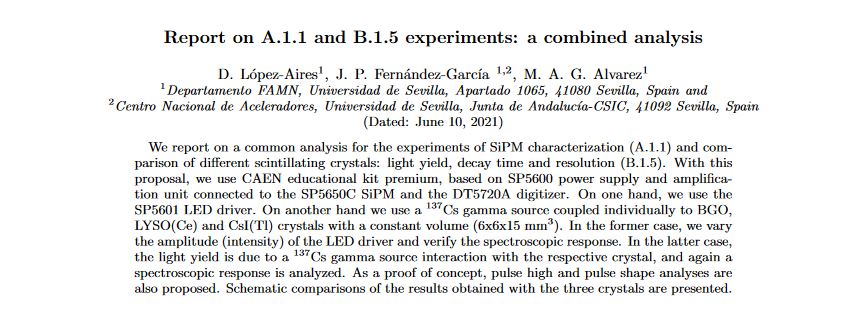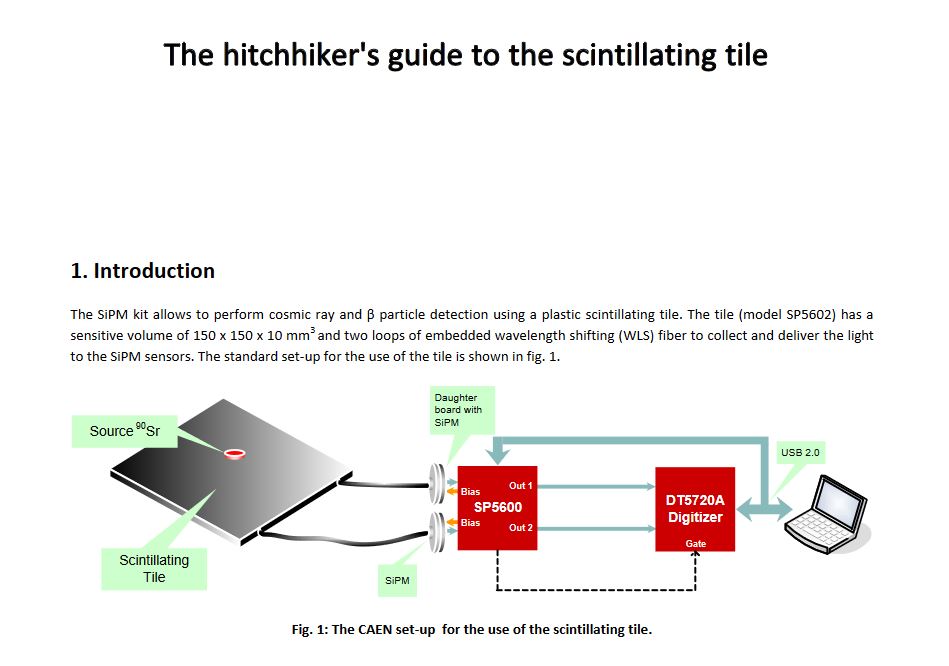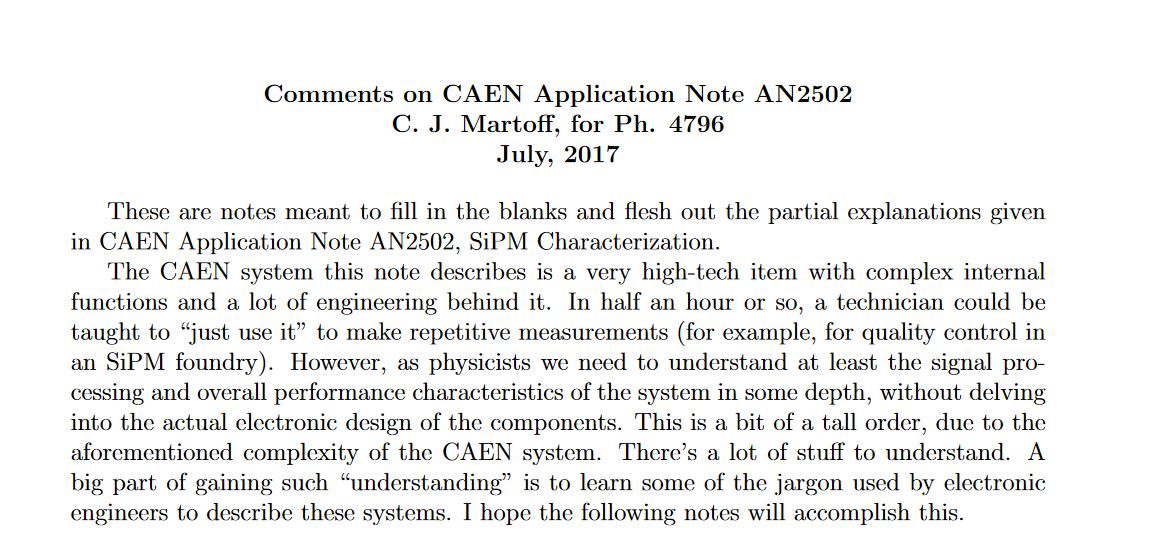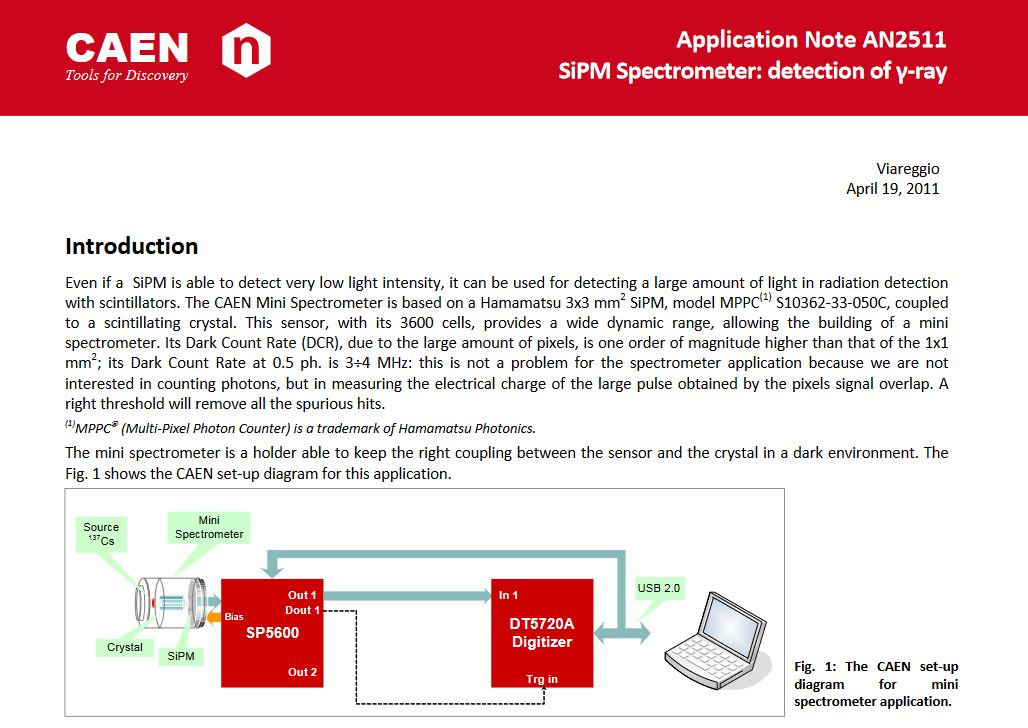Articles tagged as “Application Notes”
Understanding Silicon Photomultipliers SiPM
⏳️ Abstract We report on a common analysis for the experiments of SiPM characterization (A.1.1) and comparison of dierent scintillating crystals: light yield, decay time and resolution (B.1.5). With this proposal, we use CAEN educational kit premium, based on SP5600 power supply and amplication unit connected to the SP5650C SiPM and the







